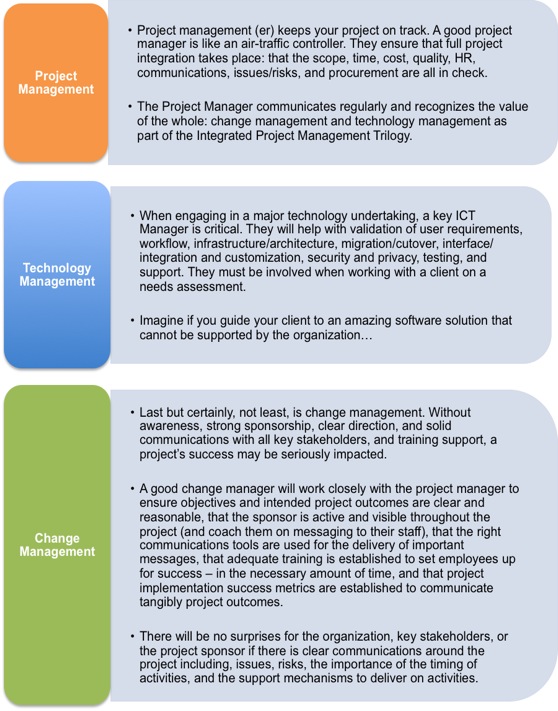A brief introduction to the benefits of data analytics, business intelligence, and artificial intelligence.
| data_ai_benefits.pdf |
The integration of data analytics (DA), business intelligence (BI), and artificial intelligence (AI) can be positive game changers, if leveraged appropriately.
The fields of data analytics and business intelligence are increasingly supported by artificial intelligence, whereby machines can be trained to scour volumes of data to trend, (self) build new data models, and grow capacity for trending, predictions, tracking, and more.
***
What do data management, business intelligence, and artificial intelligence mean?
In order to determine how to integrate data management, business intelligence, and artificial intelligence into your business or organizational modelling, it’s important to understand each one of them.
Data Analytics (DA)
Per, TechTarget.com, “Data analytics (DA) is the process of examining data sets in order to draw conclusions about the information they contain, increasingly with the aid of specialized systems and software. DA technologies and techniques are widely used in commercial industries to enable organizations to make more-informed business decisions and by scientists and researchers to verify or disprove scientific models, theories and hypotheses.” (https://searchdatamanagement.techtarget.com/definition/data-analytics)
Business Intelligence (BI)
Also from Techtarget.com, “Business intelligence (BI) is a technology-driven process for analyzing data and presenting actionable information which helps executives, managers and other corporate end users make informed business decisions. BI encompasses a wide variety of tools, applications and methodologies that enable organizations to collect data from internal systems and external sources, prepare it for analysis, develop and run queries against that data and create reports, dashboards and data visualizations to make the analytical results available to corporate decision-makers, as well as operational workers.” BI reporting is a “tool” in data analytics reporting. (https://searchbusinessanalytics.techtarget.com/definition/business-intelligence-BI)
Artificial Intelligence (AI)
Even though it’s been around since the late 1950s, many don’t understand what AI is or what it can do. Simply put, it is a machine’s (computer) ability to process data and learn via inputs and outputs (not always outputs). Machines and robots can do things better and faster than humans, it’s a fact, and humans can carry out highly complex activities that machines cannot do.
Per Science Daily, “The modern definition of artificial intelligence (or AI) is "the study and design of intelligent agents" where an intelligent agent is a system that perceives its environment and takes actions which maximizes its chances of success.” (https://www.sciencedaily.com/terms/artificial_intelligence.htm)
How does a business or organization effectively use these “tools”?
Simply put, data analytics, business intelligence, and artificial intelligence are all powerful tools to help you better understand your organization, clients, environment, and make suitable decisions. But, you need to know why you want from this information.
First, data without purpose is noise.
If you don’t know why you want to collect or measure something, it’s simply noise. Take for example, key performance indicators (KPIs). If you have more than a handful, say 3 – 5, then you’re talking metrics, not KPIs. The waters can quickly get muddied if you’re throwing a bunch of competing data sets around, per department or business unit.
Understand what it is you want to measure, and why. Is it sales based on time of year or product promotion, or efficiency improvements (# of minutes to execute a task) translating into (potentially) increased productivity, or number of visits to a national park, per day of week and time of year? Then determine if that measurement is a KEY indicator or a METRIC.
Second, is your data organized?
If your company or organization has several sets of ad hoc reports and disconnected reporting systems, pulling or amalgamating data may be an issue for analytics or any sort of business intelligence reporting. How do you generate your financial reports, via what systems, and are they tied to your productivity, efficiency, and margin measurements? Do you measure your productivity? If so, how? If you’re not inputting what you want to capture into systems that can simply output data sets for analysis or comparison, consider changing that.
Third, do you have enough data to leverage AI?
AI seems to be the latest, greatest thing. But how to incorporate it into your business is the question. You must ask, “Do you have enough data?” In order to leverage AI, one must have adequate amounts of data (a lot), for machine learning to take place. Next, what are the relationships you want to create to answer what questions, and again, why?
Machines can crunch data at a rate significantly superior to humans, but do you have enough data? And what is it that you want to: extract, measure, and train a machine to do? And, again, why?
Fourth, what type of AI could you use?
There are different types of AI to be leveraged depending on your need to process raw data, images, or sounds (also broken down into data). To answer this, you have to ask yourself, “What do you want AI to do for you?”
Could your online client service portal benefit from chat-bots with simple answers to frequently asked client questions, via Natural Language Processing AI? Do you want to tell a story with your data versus simply outputting reams and reams of reports? Do you have volumes of health-related data where you want to draw simple correlations to possible hypotheses via machine learning or deep learning? Do you want to input several years of data to trend productivity (efficiency or deficiency) in a service or manufacturing process? Or, could you benefit from robotics in a manufacturing, or repetitive manual / physical process?
In conclusion, data and tools to manage it can be ultra beneficial for your organization or business, be it in understanding your audience, analyzing user behaviour, measuring productivity and efficiency, or more. There are a vast number of companies, large and small that offer services and products in this space.
Once you’ve decided what you want to measure and record, and why, the world is your oyster with respect to whom you partner with and what you can accomplish.
I’d love to hear your thought around data management and what you’ve encountered as organizational successes and challenges, as well as the tools and processes used to get there.
Thank you so very much for your time and input.




 RSS Feed
RSS Feed
